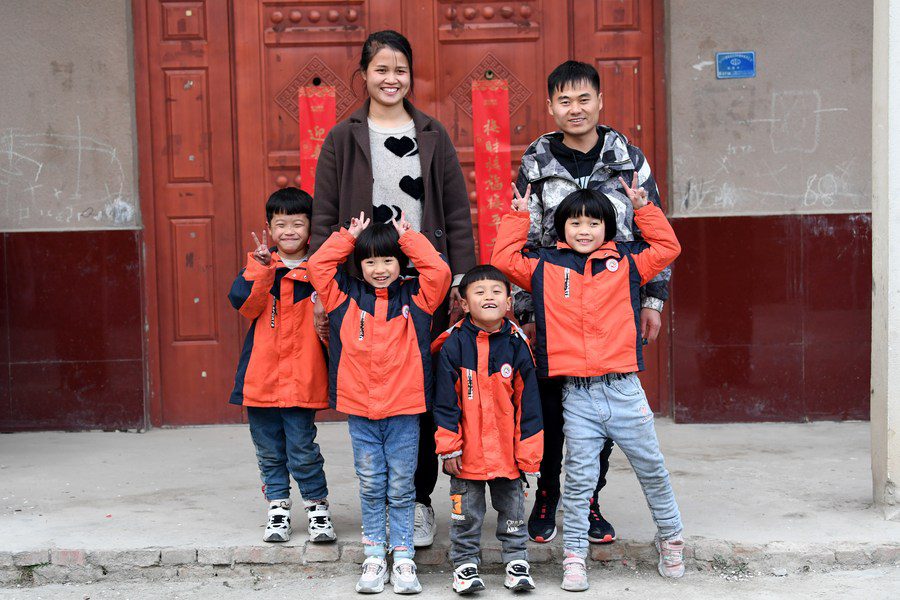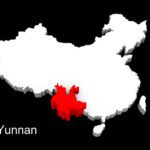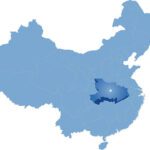Families are the basic unit of society, and their well-being is essential for the overall development of a community or a nation. This technical report provides an overview of family life in the Chinese province of Anhui. Data for this report was obtained using open-sourced information, such as the National Bureau of Statistics of China.
The report’s main objective is to provide a concise overview of the conditional state of families using Anhui family demographic statistics (e.g., number of families, family structure, racial and ethnic diversity, marriage rates, divorce rates, family income, etc.).
This report is written for stakeholders with an interest in family life in China, in this case the Chinese province of Anhui. This approach makes certain that the report’s findings are transparent and replicable, and stakeholders can access, verify, and utilize the data sources themselves
Overview
Anhui is a province located in eastern China. It is situated in the central part of the country and borders Jiangsu to the east, Zhejiang to the southeast, Jiangxi to the south, Hubei to the southwest, Henan to the northwest, and Shandong to the north.
Anhui has a rich cultural heritage with a strong influence on traditional Chinese arts, literature, and philosophy. Notable figures from Anhui include Li Bai and Wang Xizhi, renowned poets and calligraphers from ancient China.
Population Demographics
Anhui has a population of over 63 million people and is the 8th most populous province in China. The majority of the population is of Han Chinese ethnicity. According to the New World Encylopedia, the Han Chinese make up the majority of the population in Anhui, comprising the largest ethnic group in the province. It is estimated that the Han Chinese population accounts for over 99% of the total population in Anhui; however, more than 52 other ethnic groups also reside in Anhui, with the Man and Zhuang ethnic groups being the largest of this group of minorities.
Ethnic minority groups
Anhui is a province in eastern China, and the vast majority of its population is Han Chinese. However, there are also several ethnic minority groups in the province, including Hui, She, Manchu, Zhuang, and Miao. According to the New World Encyclopedia, there are 52 other ethnic groups in Anhui. The largest ethnic minority in Anhui is the Hui, followed by the Man and the Zhuang. The formation of the Han ethnicity was an important stage in the development of the Chinese nation and produced a cohesive core of the unified multi-ethnic structure. During the wars, another important ethnic minority was added to the Chinese nation: the Hui.
Han Chinese. Han Chinese make up the vast majority of the population in Anhui. It can be inferred that the traditional family system in Chinese society, which is characterized as patriarchal, patrilineal, and patrilocal, may influence family structure among Han Chinese families in Anhui. According to a study published in JSTOR, many Chinese archaeologists assume that early Chinese Neolithic societies were organized in matrilinea and, matrilocal clans and gradually evolved to patrilineal.
Hui. The Hui are a predominantly Muslim ethnic group in China, and they are distributed throughout the country, including Anhui Province.
She. The She people are an ethnic minority group with a population of around 700,000 in China, and they are mainly distributed in Fujian, Zhejiang, and Anhui provinces.
Manchu. The Manchu people are an ethnic minority group with a population of around 10 million in China, and they are mainly distributed in northeastern China, but there is also a small population of Manchu people in Anhui Province.
Zhuang. The Zhuang people are an ethnic minority group with a population of 16.18 million in China, and they are mainly distributed in Guangxi Zhuang Autonomous Region, but there is also a small population of Zhuang people in Anhui Province.
Miao. The Miao people are an ethnic minority group with a population of around 9 million in China, and they are mainly distributed in Guizhou, Hunan, and Yunnan provinces, but there is also a small population of Miao people in Anhui Province.
Marital Relationships and Parenting Practices
In 2021, the number of divorces in Anhui province was reported at 146,469, reflecting a decline from the preceding year. According to an article, the breakdown of so-called “feudal families,” or marriages arranged by parents, is to blame for the significant increase in China’s divorce rate around 1990. The divorce rate in China registered at 0.200% in 2021, showing a decrease from the prior year. A study investigates divorce trends in China across temporal and geographical dimensions, employing the provincial refined divorce rate as the dependent variable, denoting the number of divorces per 1,000 married women. Another research paper examines the influence of China’s one-child policy on inter-ethnic marriages and concludes that the policy contributed to one-fourth of the rise in inter-ethnic marriages. Furthermore, a study explores divorce in Anhui, China, revealing a significant increase in divorce rates since 1996.
Family Structure
Anhui Province’s typical agricultural character, featuring diverse topography and landscapes, makes it a representative model of rural areas in China. The typical family structure in Anhui, China, is characterized by the 4-2-1 family structure, which includes four older people (paternal and maternal grandparents), two parents, and one child, emphasizing a social living community. The traditional Chinese family has a hierarchical order, with the man as the head of the household. Additionally, a study on son preference in Anhui Province suggests that couples in Anhui control the size of their families and attempt to control the sex composition.
Family Dynamics
A study on family dynamics in China and Europe suggests that family relationships in China have changed over time due to various factors, including economic and social changes. It can be inferred that family is an important source of support and social connection, as is the case in many cultures. Beyond that, family dynamics in Anhui, China, are shaped by traditional Chinese culture and Confucian thought, emphasizing the importance of the family unit as a central institution and a social living community with a hierarchical order and a collective identity and reputation. In rural southern China, extended families still live together, with a typical family of nine made up of two aging parents in their fifties, their two sons, and their two sons’ families (two wives and two children). Parenting practices among the Han Chinese in Anhui typically emphasize education and discipline, with a focus on academic achievement and traditional values such as respect for authority and filial piety.
Politics and Economics
Anhui’s economy is characterized by its heavy industry, with major sectors including white goods manufacturing, machinery, and chemicals. Anhui’s GDP ranked 13th among China’s 31 provincial regions in 2022, with a GDP of 2.3 trillion in the first half of the year 2023, a year-on-year growth of 6.1 percent. The province’s proximity to the prosperous Yangtze River Delta provides a geographic advantage for its economic development.
Education
Education in Anhui is diverse and includes a range of universities and colleges, with Anhui University being one of the most prominent institutions, offering undergraduate and graduate programs in various fields. The province has set up six to eight local universities and 20 model vocational colleges under a scheme to improve education by 2020. Other universities in Anhui include the University of Science and Technology of China, Hefei University of Technology, Anhui Agricultural University, and Anhui Normal University. The Department of Education of Anhui Province is a government organization responsible for overseeing and regulating education in the province. Anhui University offers 43 bachelor-degree programs, 3 dual-bachelor-degree programs, 31 master-degree programs, and 4 engineering master-degree programs. Since 1995, the university has successfully jointly trained doctors with renowned foreign universities. In 2001, AHUT started to accept foreign students.
Education for ethnic groups has developed considerably. As early as the 1950s, the Party and the Government formulated educational guidelines and policies, set up institutions specializing in ethnic education, earmarked funds for the development of education, and vigorously supported the educational endeavors of all ethnic minorities throughout the country.
Family Culture
Han Chinese. Confucian traditions and values have an impact on family life among the Han Chinese in Anhui. Filial piety, respect for elders, and the importance of maintaining harmonious family relationships are central to Han Chinese family life. Ancestor worship is also common, where families pay respect to their deceased ancestors through rituals and ceremonies. Festivals such as the Spring Festival (Chinese New Year) and Mid-Autumn Festival are celebrated with family gatherings, feasts, and the exchange of gifts.
She. Before a She girl gets married, she usually has to go through many procedures, such as being a cousin, marrying a girl with wine, and welcoming her mother-in-law. “Being a cousin” means that on the day before the wedding, the girl who is getting married will be invited by her aunt and uncle to be a cousin, to sing with the guests, and all the male singers in the village can sing with her. If there are no good singers in the village, they can ask people from other villages to take their place. Nowadays, however, young people from other regions of the She ethnic group don’t necessarily have such traditional customs for their marriages.
Hui. The Hui people, being Chinese Muslims, have family life influenced by Islamic customs and practices. Islamic teachings shape their daily lives, including family interactions. Practices such as regular prayer, fasting during Ramadan, and adherence to dietary guidelines (Halal) are important aspects of Hui family life. Hui families often gather for meals and engage in communal activities within the Muslim community. The Hui people strictly follow Islamic dietary rules, avoiding pork, certain animals, and blood. They refrain from smoking and drinking but have a strong tea-drinking tradition, with unique customs in different regions. Hui women wear white round caps and gaiters, with colors representing their age and marital status. Hui men wear small white brimless hats, varying by sect and region. Newborn Hui babies undergo a naming ceremony within three days, with blessings from an imam. Circumcision is significant and celebrated between ages 5 and 9. Hui weddings involve matchmaking, betrothal, and Islamic rituals. The imam reads Nikaha, and the couple listens to Quranic teachings before entering the bridal chamber.
Miao. The Miao typically have small, monogamous families where property is inherited by men. In some places, fathers and sons share a name, with the son’s name coming first, but they frequently go by their own names. Han patriarchal traditions have an influence on some Miao families, who build ancestral halls and compile family trees. Miao young men and women have relatively free choices in marriage. Various social activities, such as “traveling to the square,” “sitting in the village,” “stepping on the moon,” and others, facilitate love marriages. In some places, like Chuxiong, Yunnan, a “girl’s room” system is used to select suitable matches. Arranged marriages arranged by parents through friends and relatives are also common. After marriage, Miao women traditionally do not leave their husbands’ homes, a practice especially prevalent in Qiandongnan. Additionally, some Miao communities have customs like “returning the girl,” “transferring rooms,” and “wife and sister marriages.”
Typical skills and abilities
Members of different cultural and ethnic groups in Anhui possess a range of skills and abilities. Here is some general information about the typical skills and abilities associated with each group:
Han Chinese. The Han Chinese in Anhui, being the majority ethnic group, exhibit a wide range of skills and abilities. They have a long history of agricultural practices and may possess skills related to farming, such as cultivation techniques, irrigation management, and crop selection. Han Chinese individuals often have proficiency in Mandarin Chinese, which is the official language, and may have strong skills in reading, writing, and communication. They also engage in various professions and occupations, including business, trade, the arts, the sciences, technology, and academia.
She. The She people specialize in tea, mushrooms, and fruits. Their tea cultivation is renowned, producing sought-after varieties like Huiming Tea and Green Hair Tea. With over 20 unique fungus varieties, shiitake mushroom farming, which the She in Jingning She Autonomous County invented, has become a thriving industry. The She region is rich in fruits, including alpine pears, chestnuts, and prunes. With market-oriented practices, they’ve expanded into greenhouse vegetables, bamboo shoots, and various high-quality produce, gaining certifications like “green food” and ISO9002 for enhanced market presence and brand recognition.
Hui. The Hui, originally an agricultural group, gained renown for their business acumen. During the Tang and Song dynasties, they thrived along the Silk Road and Spice Road, notably in cities like Chang’an (now Xi’an), the Hexi Corridor, Guangzhou, Yangzhou, Quanzhou, and Hangzhou. They established “Hu stores” and “Persian shops,” trading spices, jewelry, ivory, rhinoceros horn, silk, herbs, copperware, and ceramics. These commercial ventures facilitated economic and cultural exchanges between China and the West, connecting frontier areas to the mainland, fostering prosperity in towns along trade routes, and shaping Hui’s commercial culture. In the Yuan Dynasty, Hui commerce expanded north and south of the Yangtze River, inside and outside the Great Wall, dealing in spices, jewelry, gold, silver, grain, and leather. Even in the Ming Dynasty, the Hui continued to thrive in the commercial economy.
Miao. The Miao people in Anhui have distinct skills and abilities shaped by their cultural heritage. They are skilled in traditional crafts such as silverwork, embroidery, batik (a fabric dyeing technique), and paper cutting. Miao women are particularly known for their expertise in silver jewelry-making, creating intricate and unique designs. Traditional music and dance are also integral to Miao culture, and individuals may possess skills in playing traditional musical instruments and performing traditional dances. In medicine, the Miao have developed their own system, classifying human diseases into 36 internal and 72 surgical categories with over 20 treatment methods. Notable figures like Mr. Shi Qigui authored “Miao Medical Prescriptions” and “Guide to Animal Medicine.” In the late 19th century, Mr. Long Laoyi, a Hmong physician, performed advanced surgeries, such as extracting stillborn babies from pregnant women’s abdomens, treating broken bones, snakebites, poisoned arrows, and various wounds effectively. Miao medicines are predominantly raw and readily available for use.
Conclusion
Anhui, with its rich cultural heritage, represents a microcosm of rural areas across the country, making it an ideal focal point for understanding the complexities of family dynamics and demographics. The report sheds light on several key aspects, including population demographics that highlight the dominance of the Han Chinese ethnicity alongside numerous ethnic minorities. It explores variations in marital relationships and parenting practices among different ethnic groups, emphasizing the importance of cultural preservation and educational opportunities. The 4-2-1 family structure prevalent in Anhui, rooted in traditional Chinese values, underscores the role of family hierarchy and harmony. Educational disparities among ethnic communities are addressed, along with the influence of cultural traditions on family life, shaping practices and customs unique to each group. Lastly, the report acknowledges the diverse skills and abilities possessed by individuals across various ethnic backgrounds, reflecting both cultural heritage and modern proficiency. Overall, this report serves as a valuable resource for policymakers, researchers, and stakeholders interested in promoting and understanding the well-being of families in Anhui and provides essential insights into the intersection of culture, tradition, and family dynamics in the region.





